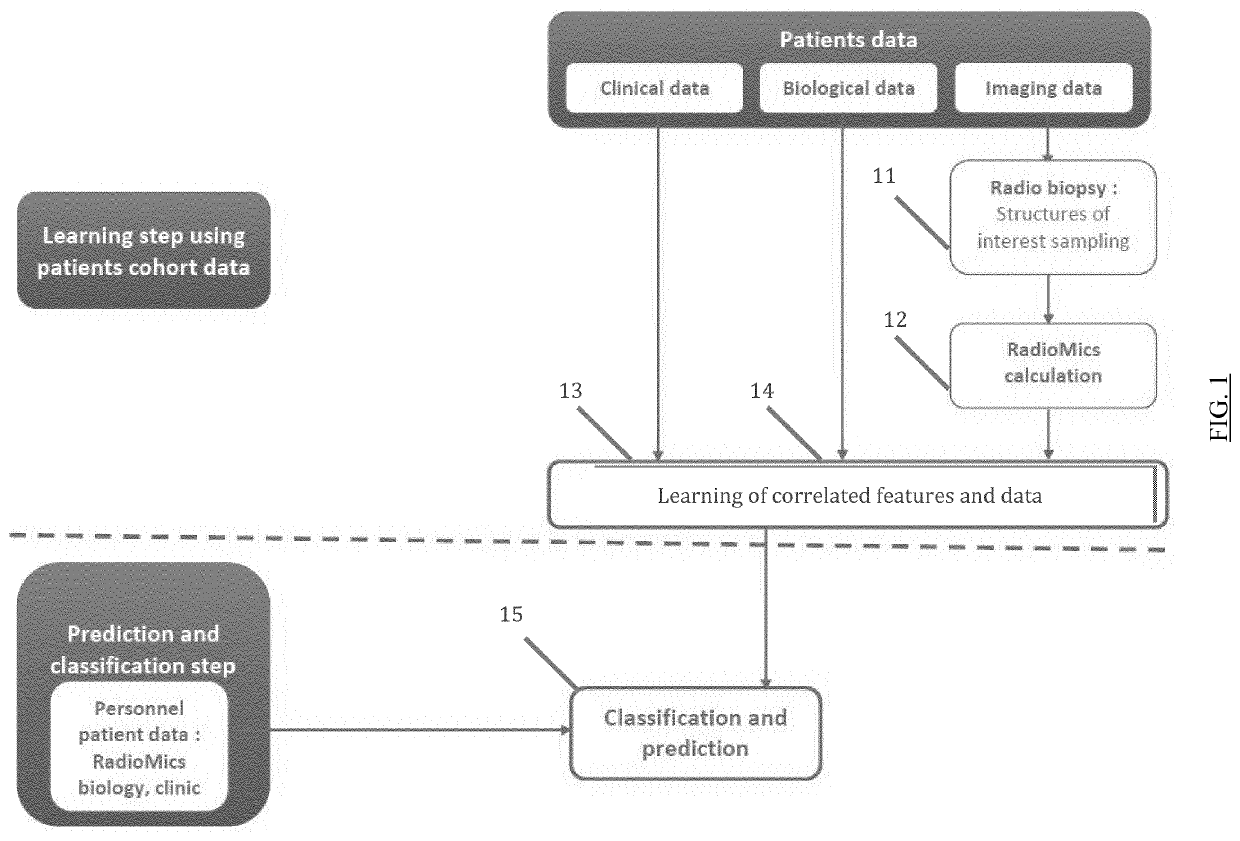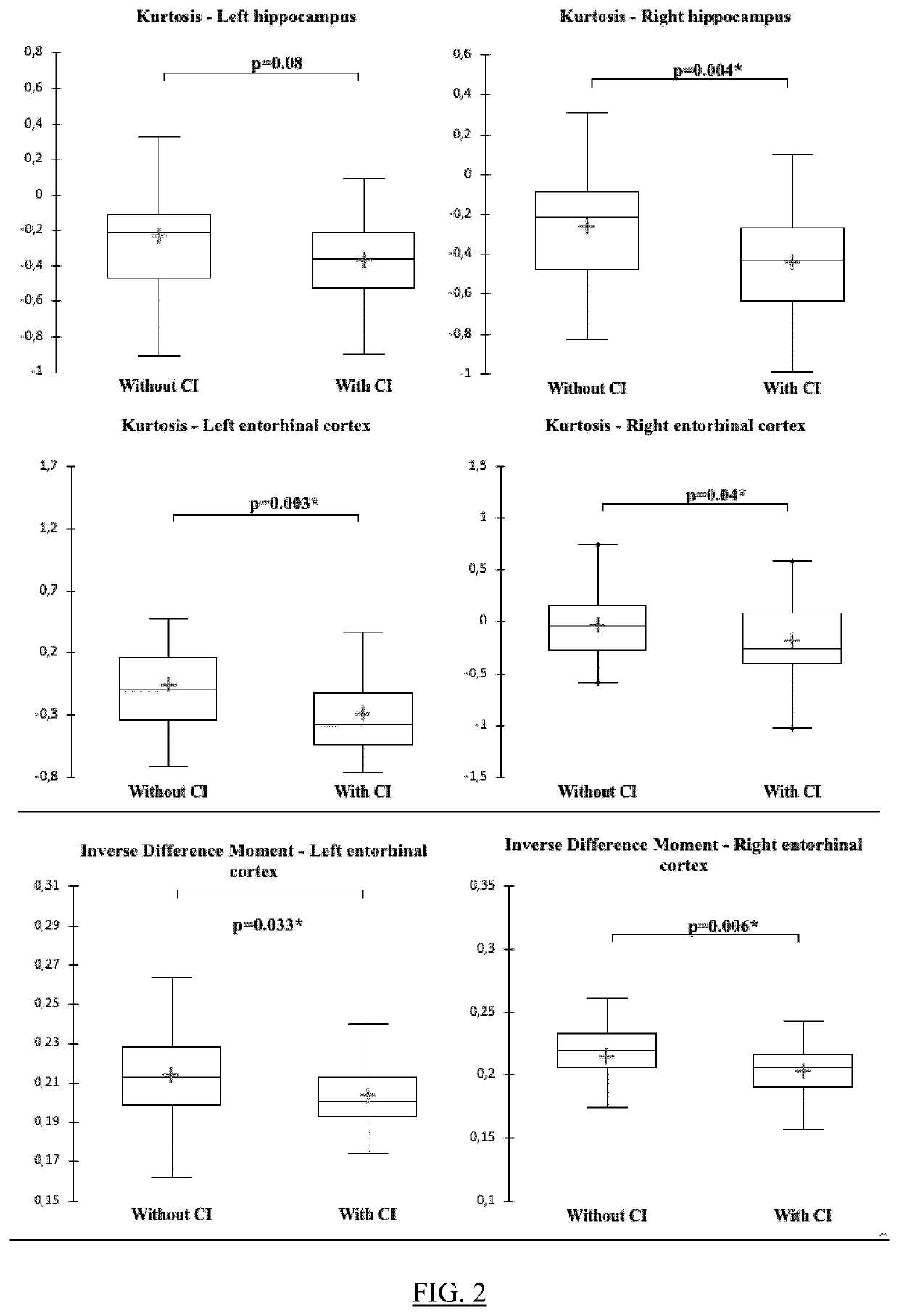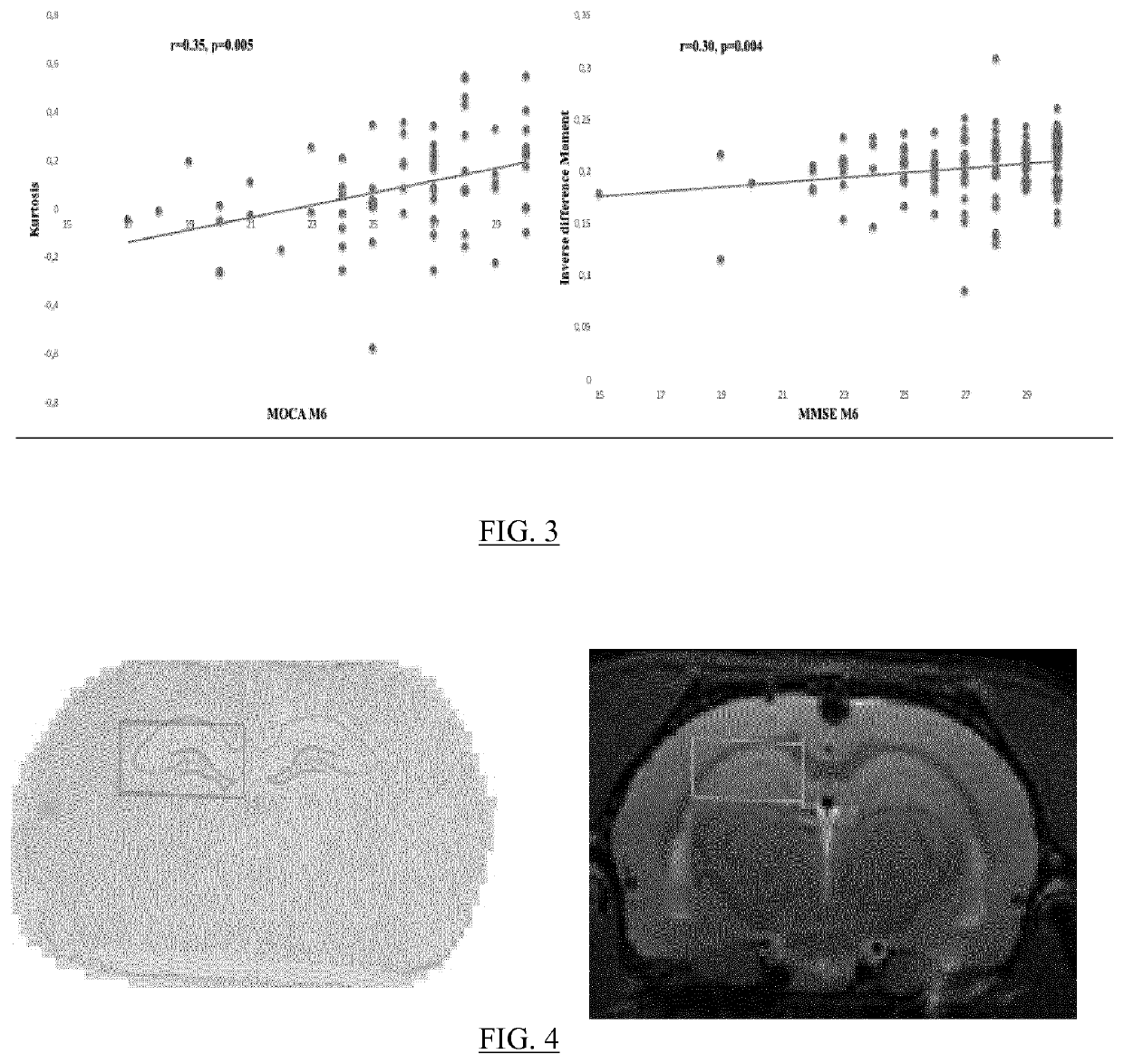Method for early prediction of neurodegenerative decline
a neurodegenerative decline and risk technology, applied in the field of neurodegenerative decline risk prediction, can solve the problems of difficult identification of mild cognitive phenotypes, inability to identify mild cognitive phenotypes, and inability to age-appropriately, so as to avoid model over-fitting and limit variables
- Summary
- Abstract
- Description
- Claims
- Application Information
AI Technical Summary
Benefits of technology
Problems solved by technology
Method used
Image
Examples
example 1
mple for Post-Stroke Cognitive Impairment
[0116]As previously described, the biological data may include blood biomarkers, and / or genomic information, and / or histological data, while the clinical data may include data from neuropsychological tests, as MoCA in this example, and values measuring the volume of at least one brain structure at different moments, for example acquired on patients 72 h after a stroke and six months after a stroke.
[0117]In the considered embodiment, data from the STROKDEM cohort (Study of Factors Influencing Post-stroke Dementia, from Clinicaltrials.gov with registration number NCT01330160) are used. This base collects clinical, biological, lesional and pharmacological data from stroke patients of different ages, with the aim of determining factors associated with post-stroke dementia. The study concerned patients with hemispheric stroke with a first MR exam dating from less than 72H with an IQ-code below 64 (“Informant questionnaire on cognitive decline”) an...
example 2
ample for Post-Stroke Cognitive Impairment
[0133]In this example, one hundred and sixty consecutive patients from the STROKDEM cohort are used. Cognitive status is assessed by MoCA scores. Cognitive impairment is defined by a score <26, which is a validated cut-off in stroke patients. To control for educational status, one point is added to the MoCA score in patients with less than 12 years of education. For the cognitive outcome, an extensive battery of neuropsychological tests, broadly classified into four cognitive domains (executive function / attention, memory, language, visuospatial ability) is performed on patients at each follow-up time point. For every patient, a test-specific z-score is calculated based on available norms corrected for age, sex, and education. A summary domain-specific z-score is obtained by averaging the test-specific z-scores in each domain. A summary z-score ≤1.5 in at least one domain is used to determine cognitive impairment. Finally, cognitive impairmen...
example 3
ation of Post-Ischemic Neuronal Loss in a Stroke Model
[0144]In this example, Wistar rats weighing 280 to 320 g are randomized 1:1 to sham or ischemia-reperfusion (IR) groups. It has to be noted that all the experiments are done in accordance with the institutional and national guidelines for the care and use of laboratory animals and were approved by the local animal care and use committee (Comite d′Ethique en Experimentation Animale du Nord-Pas de-Calais, Lille, France; reference: 00455.02).
[0145]For the IR group, after cerebral ischemia induction by transient middle cerebral occlusion; the animals are randomized again into four groups corresponding to four examination times: 24 hours post ischemic procedure (24H), one week (D7), 1 month (M1) and 2 months (M2). At each experimentation time, magnetic resonance images are acquired on the animals, which are then sacrificed, and histology analysis is realized.
[0146]Amongst the different existing ischemic stroke models, in this example,...
PUM
 Login to View More
Login to View More Abstract
Description
Claims
Application Information
 Login to View More
Login to View More - R&D
- Intellectual Property
- Life Sciences
- Materials
- Tech Scout
- Unparalleled Data Quality
- Higher Quality Content
- 60% Fewer Hallucinations
Browse by: Latest US Patents, China's latest patents, Technical Efficacy Thesaurus, Application Domain, Technology Topic, Popular Technical Reports.
© 2025 PatSnap. All rights reserved.Legal|Privacy policy|Modern Slavery Act Transparency Statement|Sitemap|About US| Contact US: help@patsnap.com



